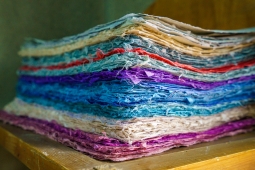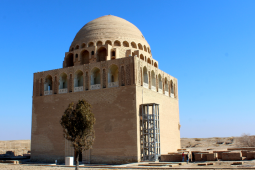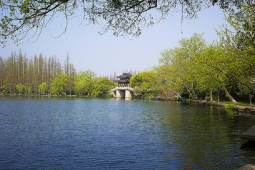Did You Know? Traditional Horseback Games and Equestrian Sports along the Silk Roads
© Noufal Said Salim Alruzeiqi /UNESCO Youth Eyes on the Silk RoadsAnimals played an essential role in the exchange and interactions taking place along the Silk Roads. Whilst sheep and goats provided many people with the commodities of daily life, camels and horses were crucial to travel, exploration, and the development of mercantile relations between peoples. Indeed, the history of the partnership between humans and horses dates back around 5,500 years and has undoubtedly shaped the trajectory of the civilizations along the Silk Roads and beyond, leaving an indelible mark on the way we interact with a world shaped by horsepower.
Horses were crucial to daily life along the Silk Roads, particularly for nomadic pastoralists living in the unique environment of the Central Asian Steppe, but also in the neighbouring sedentary societies that relied on horses for travel, trade, and farming etc. Due to this prominent role, horses also occupied a significant place in the artistic representations of many peoples along the Silk Roads, including within painting, illuminated manuscripts, statues, ceramics, and poetry and literature. In addition to these important cultural representations, the horse also came to occupy an important role within the sphere of traditional sports and games which were developed and spread across these interconnected regions. Many of these traditional sports and games are still played today, where they remain important facilitators of social cohesion, mutual respect, and cooperation between peoples.
Generally speaking, nearly every item of riding equipment used today originated among the horsemen of the Eurasian steppes and was adopted by the people of the lands directly to the east, the south, and later the west of the region. However, horsemanship games and traditional equestrian sports have a vast number of different origins and many were later adopted and adapted by people who had witnessed them whilst travelling along these routes.
The traditional sport Chogān, from the Iranian Plateau, is an early precedent of the equestrian game polo, and involves two teams on horseback competing to pass the ball through the opposing teams goal posts using wooden sticks. The game, which has been played for over 2,000 years, has periodically been portrayed in ancient miniatures. Today the sport is accompanied by musical performances and storytelling. As such, representations of the tradition have a strong presence in the literature, storytelling, proverbs, handicrafts, and ornaments of the communities that take part. Like many traditional sports involving horse riding, Chogān also establishes a connection between nature, humankind, and horses, and is traditionally transmitted from generation to generation.
Similarly, the game polo, which today is played all over the world, is one of the oldest formalised equestrian sports. First played in the Iranian Plateau sometime from the 6th century BCE onwards, polo is a played on horseback between two teams of four players. It has many basic similarities to Chogān and involves two opposing teams attempting to drive a wooden ball down a grass field between two goal posts. Originally a training game for the cavalry and Royal guards, polo soon became a sport played extensively by nobility, both men and women. From the Iranian Plateau the game spread to the Arabian Peninsula and then, via the Silk Roads, south to the Indian Subcontinent and east to China, and Japan. From its earliest days the sport was associated with nobility, cultural interactions, and diplomacy, with written accounts of matches being played between opposing teams from different regions from as early as 600 BCE. As the game was spread to new locales, it picked up subtle changes in rules, styles, and names for the different parts of the game with strong influences from the Indian Subcontinent.
Another example can be found in Oman, where a tradition known as horse and camel Ardhah is practised across many regions. Here people gather around a racecourse to watch shows by horse and camel riders that reflect their skill in horsemanship, showmanship, and the training of animals. Traditional arts including poetry recitals also accompany these riding demonstrations which can vary from horses and camels lying down, riders racing standing up, and joining hands with another rider whilst travelling at great speed. In what is today Kyrgyzstan, a traditional game known as Kok boru, which represents a synthesis of traditional practices and performances is played. Here two teams on horseback manoeuvre, historically with a goat’s carcass (although this is replaced with a mould in modern-day games) and try to score by placing it into the opponents’ goal.
Ultimately, as horsemanship spread across much of the globe it enabled mass movement over land and in the same way, facilitated movements and exchanges along the historic Silk Roads, contributing to the spread and interaction of many different cultures. In the contemporary world this continues in the varied traditional sports and games played on horseback. The sports and games described above are by no means an exhaustive list and there are countless more equestrian sports and traditional horseback games that have been developed and shared along the Silk Roads that remain indelible parts of the shared heritage of these routes, enjoyed by diverse groups of people.








